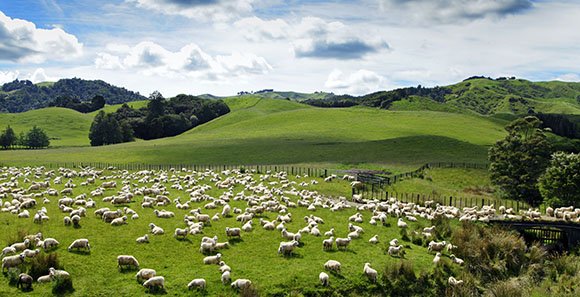Ingredients
All Beachport Liquid Minerals products are made up of a unique chelated blend of trace elements and naturally sourced amino acids from kelp and sea grasses.
They also contain fulvic acid – nature’s most powerful natural electrolyte – which makes them bio-active and bio-available. What does this mean? It makes nutrients more effective and available in the animal’s bloodstream for longer.
By harnessing the absorption and retention qualities of fulvic acid, our products can deliver nutrients straight into the animal’s bloodstream without them being broken down in the rumen. They then last in the system for six weeks, working similarly to an injection.
Our products can therefore minimise the dependency on urea in lick and blocks, while improving livestock health and productivity.

3-in-1 Formulation
 Kelp / Seagrass extract
Kelp / Seagrass extract
Kelp / Seagrass extract is high in 15 naturally occurring amino acids, as well as trace elements. Amino acids are the building blocks of protein and help with the utilisation of feed. Beachport contains nine essential amino acids which can help with tissue repair, energy stores, settling the nervous system, balancing protein, lowering stress – plus more. Read more here.
Fulvic Acid
Fulvic acid is one of nature’s most powerful natural electrolytes. It stimulates the rumen, can bond and dissolve minerals and nutritional elements and carry minerals and trace elements into cells. Read the full article here.
Chelated Elements
The measures of major and essential trace elements in Beachport’s supplements are calculated to allow for the increased absorption and retention abilities of the organic electrolytes (fulvic acid).
Chelated Elements
The following elements in our products collectively play an important role in the health of livestock. Levels will vary depending on the product and its use.
Major Elements
Major elements are essential minerals that the body requires larger amounts of.
Phosphorus
works on metabolic pathways and physiological functions such as bone and joint health, helps with the way energy is used and distributed, with protein synthesis, the transport of fatty acids and amino acid exchange. It’s also important for growth and cell differentiation, appetite control, efficient feed utilisation and fertility.
Magnesium
is linked closely to calcium and phosphorus. 70% of magnesium is found in the skeleton and the remainder is utilised in soft tissues and fluids. Magnesium plays a vital role in cellular respiration, cellular biochemistry and function, active transport system and the nervous system (improves temperament). Also helps with prevention against grass tetany (Hypomagnesaemia) and milk fever.
Potassium
works alongside sodium, chlorine and bicarbonate ions in osmotic regulation. It has an important role in the nervous system, muscle functions and carbohydrate metabolism.
Sulphur
assists in microbial digestion and protein synthesis, as sulphur occurs in proteins which contain the amino acids cystine, cysteine and methionine.
Trace Elements
Trace elements are essential minerals which are important to daily function but are only needed in small amounts.
Copper
a component in proteins involved in blood which helps with blood health and growth of the animal.
Cobalt
required by the microorganisms in the rumen for the synthesis of B12; also functions as an activating ion in enzyme reactions.
Iodine
a small amount is already present in the body. Iodine is required in the synthesis of the hormones produced by the thyroid gland. From the synthesis of the hormones produced by the thyroid gland, iodine also plays a role in fertility, immune defence, digestion and muscle function.
Manganese
is important as it acts as an activator of enzymes. It helps with growth, skeletal development, fertility and reproduction. One of the first signs of manganese deficiency is abnormalities in young calves and lambs, as well as in lower conception rates.
Zinc
is found in every tissue in the animal’s body. Important to animals as it helps with skin, wool, hair, hoof health and wound healing. Zinc is also involved in nucleic acid metabolism, immune system function and electrolyte balance.
Selenium
involved with Vitamin E in the immune system to protect against heavy metal toxicity. Selenium also assists in the production of the thyroid hormone, muscle development (white muscle disease), milk production, blood health and tissue health of young animals.
Downloads
- What is in Beachport Liquid Minerals Download PDF
